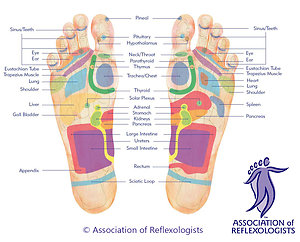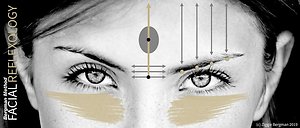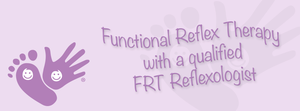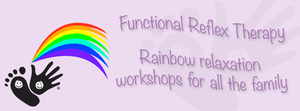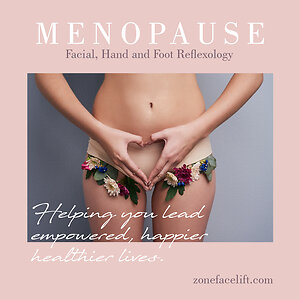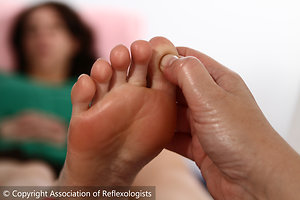Reflexology
Reflexology is a complimentary therapy which uses the application of gentle pressure to the reflexes of the feet, hands or face to free blocked energy, stimulating the body’s self healing, bringing about deep relaxation and promoting a sense of well being and balance.
It is based on zone therapy, the theory behind this is that areas or ‘reflex’ points of the feet, hands, and face correspond to certain areas of the body. Stimulation of these reflexes can help restore balance to the body allowing energy to flow freely, helping the body work more efficiently.
Treatment aims to increase blood circulation, stimulate neural pathways and boost the immune system.
It can help with:
Balancing the system (homeostasis)
Stress relief
Relaxation
Pain relief
Improved sleep patterns
Improved circulation
Improved elimination of toxins
Improved immune response
The psychological benefits of rest, attention and personal care.
Specific conditions known to benefit from reflexology include:
Stress and anxiety
Insomnia
PMT
Fertility
Pregnancy
Menopause
Headaches
Back pain/sciatica
Digestive disorders
The art of reflexology dates back nearly 5000 years to ancient Egypt, China and India. It was first introduced to the West in the late 1800’s.
It is suitable for people of all ages from newborns to those receiving end of life care.
If you’d like any further information or would like to book a session please get in touch.
Functional Reflex Therapy FRT
The FRT Framework was developed by Lorraine Senior who is a reflexologist and experienced teacher working with children and adults with special and additional needs. FRT is designed for children and adults who have high levels of anxiety, social educational needs, autism and other non-specific communication and learning difficulties.
It is used in a variety of settings to support adults who are affected by conditions such as Dementia and Alzheimer’s. Schools across the UK have reflexologists delivering the FRT Framework to children as part of their timetable and it is also used widely in care homes and in assisted living facilities.
The FRT Rainbow Routine
The FRT Rainbow Routine is a combination of relaxation movements which are drawn from traditional reflexology and supports the principle that points in the feet, lower leg, hand and forearms relate to areas of the body.
Applying touch techniques and holds to specific areas can produce changes within and throughout the body by encouraging the release of oxytocin (the happy chemical), which in turn gives the potential to help relaxation, improve mood, reduce anxiety, support wellbeing, encourage social interaction and have a positive effect on the person receiving the treatment.
The Functional Reflex Therapy Framework for Reflexology is designed for children and adults of all ages.
Reflexology for Menopause
The Menopause is a time when fundamental physiological shifts happen for a woman, these are accompanied by a range of physical and emotional symptoms. Sometimes we fear changes to our lives because we don’t know how to control them and often this is out of our hands. If however, we focus on what we can control we can lead healthier and happier lives. If we choose what we put into our body, on our body, how we use our body and what we put into our mind we can retain more of a handle on how we will lead the rest of our lives.
The 12 week menopause programme uses facial, hand and foot reflexology to help rebalance the zones of the body from head to toe. It is specifically designed to help the peri menopausal and menopausal woman.
Reflexology Lymph Drainage (RLD)
RLD is an award winning reflexology technique which focuses on stimulating the lymphatic reflexes on the feet. The aim is to cause an effect on the lymphatic system in the body. It is a unique sequence that has been researched and developed by Sally Kay, whilst working in Cancer Care. The results appear to support the theory of reflexology.
Lymphatic drainage massage (MLD) is used to treat conditions other than lymphoedema, and RLD may be used similarly.
MLD may be useful with the following conditions
Arthritis
Asthma
Eczema
Chronic fatigue
Fibromyalgia
ME
Sinus problems
Migraines
Headaches
Muscular tension
Aches and pains
Premenstrual Syndrome
Advanced Gua Sha
Gua means 'scrape' and Sha means 'petechiae'. "Gua Sha began as a full body treatment—which most people don't realize since facial techniques have recently become popular. The key point is to scrape the skin (commonly the upper back) to invigorate blood flow, release heat-toxins, stimulate lymphatic drainage, activate various points of the body, and bring helpful cells to the area by stimulating an immune response. Facial Gua Sha is perfect for those with tight muscles, sluggish circulation, and tech necks. As facial therapy, it helps de-puff, stimulate microcirculation, and promote collagen production.
Gua Sha has recently become very popular but the tools—and process—certainly aren’t new. The earliest Gua Sha-like tool predated acupuncture in the Stone Age. It was fashioned out of Bian stone in various shapes used for things such as heat therapy and bloodletting, Metallic tools and needles then gained favour over stone tools during the Bronze Age. Huang Di Nei Jing, the most representative Chinese Medicine text from 475 to 221 BC notes that Bian stone tools then became known as 'Bian Therapy' along with acupuncture and herbal therapies.
According to traditional Chinese medicine, qi or chi is energy that flows through the body. Many people believe that a person’s qi must be balanced and flowing freely to ensure their health and wellbeing. Practitioners believe that stagnant qi is a possible root of inflammation—the underlying cause of several conditions associated with chronic pain. Rubbing the skin’s surface is thought to help break up this energy, reduce inflammation, and promote healing.
This is where the lymphatic system comes in—the body’s impressively complex, waste-drainage system. Unlike our cardiovascular system, which uses our heart to pump blood through it, our lymphatic system circulates lymph fluid by our muscles moving and contracting, Gua Sha is particularly helpful for lymphatic drainage in our face because we don't move the muscles in our face all that much. The intentional movements of a facial massage will help move the lymph through the system and result in a more toned and sculpted appearance.
We can also use this technique in our self-care rituals. Gua Sha is especially effective at relieving muscular tension and breaking down fascia adhesions—perfect for those with tight muscles, sluggish circulation, and tech necks. As facial therapy, it helps de-puff, stimulate microcirculation, and promote collagen production. The key to Gua Sha is consistency. So, go ahead and get to scraping.
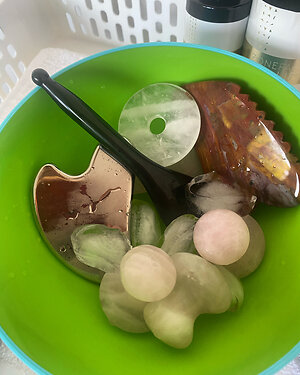
Zone Face Lift
“A spiritual facial treatment, unlike an other...the effects were immediate” Editor Margaret Hussey (Sunday Express)
Zone Face Lift can be booked as a single treatment or as a 6 or 12 week bespoke programme.
“An all natural alternative to botox with internal benefits to boot”. Hip and Healthy
Zone Face Lift Massage usually shows results after the first treatment.
There are numerous benefits to be gained from the full 12 Zone Face Lift Programme including:
An increase in skin oxygenation.
Skin looks more contoured, fresher and (over a series of treatments) tighter.
Regular Zone Face Lift treatments helps to reform and sculpt facial tissue and re-programme habitual repetitive actions such as frown lines, offering a far less invasive option than botox and a much cheaper one too.
It encourages lymphatic drainage and helps to detoxify the skin.
It increases collagen and elastin from the inside out, plumping up skin and reducing wrinkles.
It can help to eliminate pigmentation spots and acne and reduce puffiness.
It helps to relax over-tight muscles in the face, neck and shoulders.
It tightens and tones the skin in the face and neck.
It improves blood flow into muscle tissue, bringing extra oxygen and nutrients and aids the removal of waste products through the venous return. This helps muscles function to their full potential, keeping them tones and maintaining their elasticity.
It stimulates sebacious glands which produce more sebum, which helps soften the skin and also works as an anti-bacterial film which can improve conditions such as acne.
It removes dead skin cells, leaving the skin smoother and softer.
It reduces puffiness.
Superficial and deep layers of the skin are stimulated, increasing cellular function and regeneration of body cells.
Regular treatment may help to preserve youthful skin and soften wrinkles or fine lines.
Encourages calmness and deep relaxation in both body and mind resulting in a reduction of stress.
Indian Head Massage
Indian head massage has a rich history, dating back thousands of years in India. Initially, it was a technique used by women to maintain healthy hair, but soon, it was recognised for its relaxing and therapeutic effects on the mind.
Indian head massage is a deeply relaxing treatment focusing on relieving tension in the head, neck, and shoulders, using a variety of pressure and techniques such as kneading, tapping, and stroking, to provide a customised experience tailored to individual needs.
The goal is to release stress and tension, promote relaxation, and improve circulation.
Indian head massage also stimulates the circulation of blood, oxygen, and nutrients to the scalp and hair follicles, promoting hair growth and nourishment.
This wonderful treatment provides a moment of tranquillity and mindfulness, allowing individuals to pause, unwind, and reconnect with themselves in today’s fast-paced world.
Key Benefits of Indian Head Massage
Indian head massage offers a wide array of benefits, making it a popular choice for those seeking relaxation and wellness.
- Relief from Tension Headaches and Migraines: Indian head massage targets the head, neck, and shoulders to relieve the tension that frequently causes headaches and migraines.
- Reduction of Stress and Anxiety: The calming techniques help settle the mind, reducing feelings of stress and anxiety.
- Improved Sleep Patterns: Many find that the relaxation induced by an Indian head massage leads to better, more restful sleep.
- Stimulation of Hair Growth: Massaging the scalp stimulates the hair follicles, promoting hair growth and health.
- Detoxification and Improved Circulation: The massage stimulayes blood flow and lymphatic drainage helping to remove toxins from the body.
- Mood Improvement and Emotional Balance: The release of endorphins during a massage session can boost mood and create a sense of well-being.
- Enhanced Mental Clarity: By reducing “mental fog,” individuals often experience improved focus and clarity after a session.
- Relief from Sinusitis and Congestion: The massage can promote drainage and relieve the buildup of sinus pressure.
- Increased Energy Levels: Improved circulation and relaxation can lead to a boost in overall energy.
- Reduction in Eye Strain: Gentle massage around the eyes helps reduce strain and fatigue, especially for those who spend long hours in front of screens.
- Easing of Muscle Tension: Targeted massage helps to relax muscles and improve flexibility in the neck and shoulder area.
- Boosted Immune System: By reducing stress and improving circulation, Indian head massage can contribute to a stronger immune system.
- Balancing Effect: In line with Ayurvedic principles, it’s believed to balance the body’s energies, promoting a sense of harmony and wellness.
